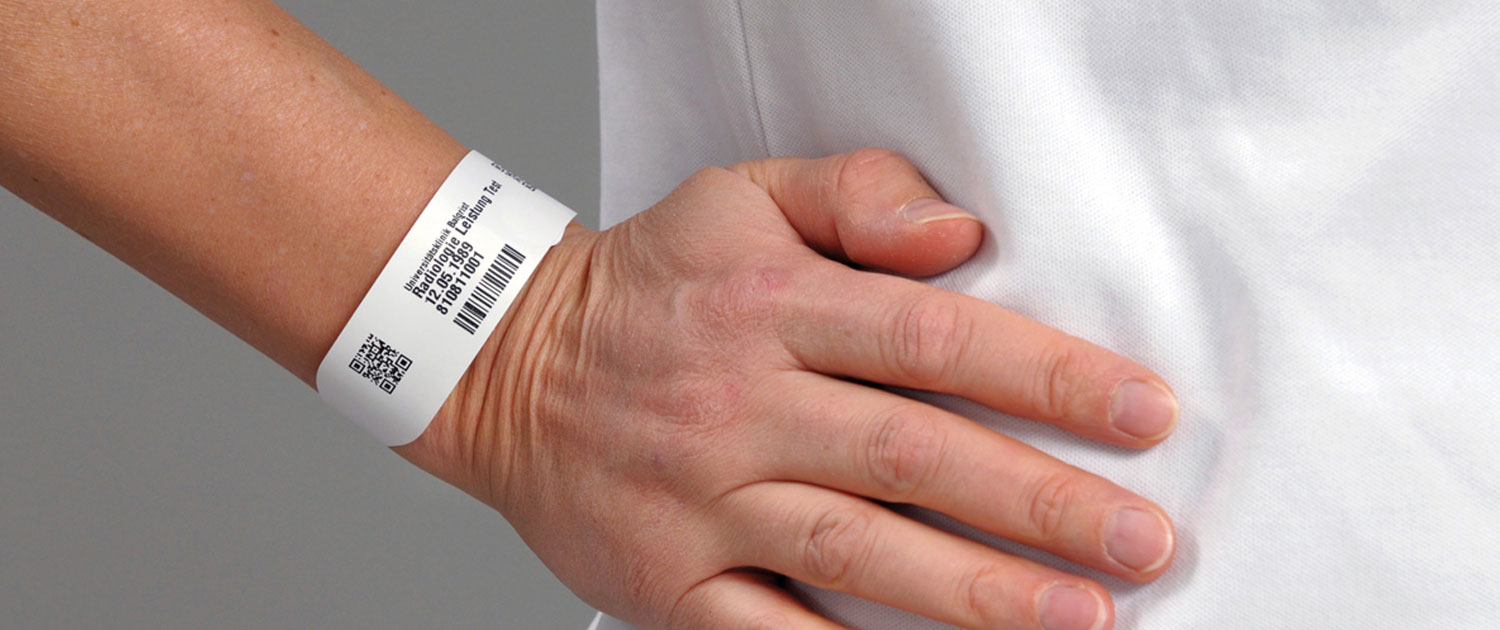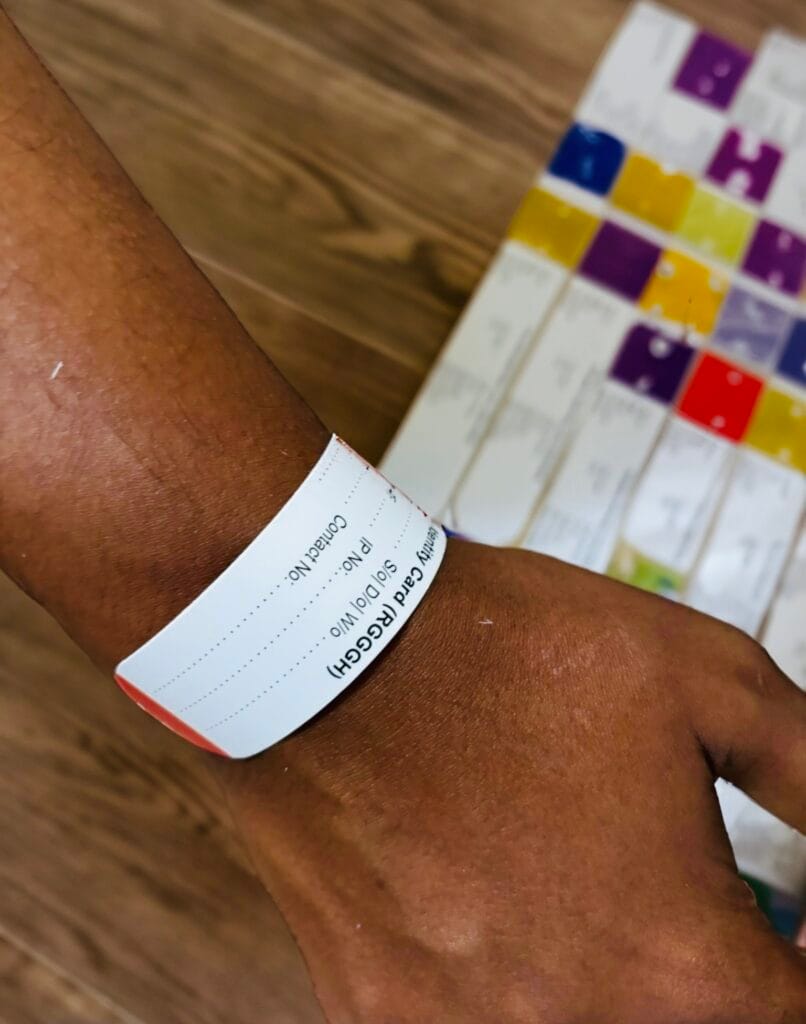The Key Features of a Reliable Patient Identification Band in Medical Care
The Key Features of a Reliable Patient Identification Band in Medical Care
Blog Article
Enhancing Client Treatment With Effective Identification Bands
The execution of efficient identification bands is a pivotal element in boosting patient care within health care setups. As the landscape of client identification develops, one must consider the effects of these systems on total health care delivery and person outcomes.
Importance of Patient Recognition
Making certain exact person recognition is essential in medical care setups, as it directly influences the safety and high quality of treatment offered. Misidentification can bring about severe mistakes, including administering the wrong medication, doing wrong procedures, or miscommunicating essential patient information. Such mistakes not only endanger individual safety and security yet can additionally cause lawful implications and lowered rely on healthcare systems.
Reliable patient identification is essential to establishing a safe and secure atmosphere where patients get ideal and individualized treatment. It assists in the exact paperwork of clinical backgrounds, allergic reactions, and therapy plans, making certain that healthcare carriers have accessibility to crucial information in any way times. Durable identification procedures help streamline interaction amongst medical team, boosting collaboration and reducing the threat of errors.

Kinds Of Identification Bands
Identification bands play an important function in keeping precise patient documents and improving safety within health care environments. Various kinds of recognition bands are used to satisfy the specific needs and requirements of various client populations.

One more kind is the ankle joint band, which is especially helpful for infants and newborns, ensuring that recognition remains undamaged even throughout treatment procedures. Specialty bands, such as those for allergic reaction informs or fall threat indicators, give added layers of security by drawing prompt attention to important individual conditions.
Recently, digital identification bands have actually gained popularity, incorporating barcodes or RFID modern technology that can be scanned to quickly fetch patient information. These bands streamline workflows and minimize the threat of human mistake throughout client recognition processes.
Advantages of Effective Recognition
Reliable recognition of patients with making use of identification bands contributes substantially to general client security and care quality. By ensuring that each individual is accurately identified, doctor can efficiently match medical therapies and procedures to the right individual, lessening the risk of mistakes. This is particularly important in atmospheres with high client turn over, where the possibility for misidentification is greater.
Furthermore, reliable identification bands improve interaction among health care teams. Clear and accurate client recognition cultivates cooperation and guarantees that all group members recognize an individual's specific demands and clinical history. This communication is necessary for providing collaborated treatment, particularly in emergency situation circumstances where time is crucial.

Eventually, reliable identification with using recognition bands not just safeguards clients but additionally advertises a society of safety and security within medical care centers (Patient Identification Band). By focusing on accurate recognition, healthcare organizations can boost results and boost the total patient experience
Executing Identification Solutions
While the value of client recognition is well identified, the application my explanation of durable identification systems presents a facility challenge for healthcare organizations. Establishing effective recognition systems requires a comprehensive method, including technology, personnel training, and procedure assimilation.
First, organizations have to pick proper identification technologies, such as barcode scanning, RFID, or biometric systems. Patient Identification Band. These modern technologies ought to be assessed based on cost, use, and compatibility with existing framework. A pilot program can assist identify prospective concerns before full-scale implementation
Following, thorough training for personnel is important. All workers should comprehend the significance of precise patient recognition and be proficient in making use of the selected innovations. Routine training updates and evaluations can reinforce finest methods and guarantee ongoing conformity.
Additionally, medical care organizations need to establish standardized treatments for patient identification throughout all departments, minimizing inconsistencies and improving communication. Regular audits can assist determine gaps in adherence to these procedures.

Inevitably, an efficient implementation of identification systems not only enhances person safety but also promotes a society of responsibility and persistance within health care setups, guaranteeing constant and dependable individual care.
Future Trends in Patient Identification
Innovations in modern technology are established to transform patient recognition methods in health care settings. The combination of biometric identification techniques, such as fingerprinting and face recognition, is anticipated to boost precision and safety and security. These innovations can considerably lower the danger of misidentification, guaranteeing that people get the appropriate treatments and medicines.
Moreover, the implementation of blockchain innovation for patient records is gaining traction. This decentralized strategy can offer a tamper-proof and secure technique for managing client identities, therefore simplifying access to important info across various medical care providers.
Another pattern is the enhancing use of mobile wellness applications that leverage QR codes for patient recognition. These applications enable real-time updates and simple access to patient information, equipping healthcare experts to make enlightened choices swiftly.
In addition, expert system (AI) is positioned to play an essential role in assessing person recognition information, determining patterns, and anticipating prospective recognition errors prior to they take place.
As these innovations develop, they assure not only to boost individual safety however likewise to improve the general performance of health care distribution systems. Welcoming these innovations will be crucial for future-proofing individual treatment techniques.
Conclusion
Finally, efficient recognition bands are essential for boosting individual safety and security and care high quality within healthcare setups. By minimizing the risks related to misidentification, these bands assist in accurate and timely details retrieval, inevitably enhancing interaction amongst doctor. The execution of durable identification systems not just promotes a culture of security however additionally positions health care establishments to adjust to future fads in individual identification technology, ensuring optimal results for patients in varied professional settings.
As the landscape of patient recognition progresses, one should take into consideration the effects of these systems on general healthcare delivery and person end results.Reliable patient identification is basic to developing a secure setting where people obtain suitable and customized care. Ultimately, focusing on content reliable person recognition strategies not just look here cultivates a culture of safety and security but also adds to boosted individual end results and total complete satisfaction with medical care solutions.
Reliable identification of clients with the use of identification bands contributes significantly to total patient safety and care high quality. The execution of robust identification systems not just cultivates a culture of safety yet also placements health care institutions to adjust to future patterns in client identification technology, guaranteeing optimum results for people in diverse professional environments.
Report this page